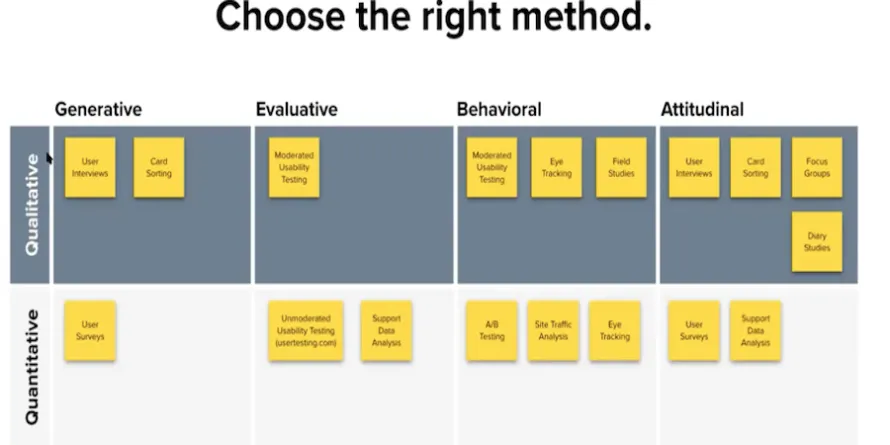How to Implement a UX Strategy That Works for You
Image

Developing a customer-focused UX strategy is a critical step in providing visitors with a great website experience. Dive in to learn how to create the right UX strategy for your site.
Image

Hero image by Kelly Sikkema via Unsplash.
Creating a UX strategy can seem daunting, especially when you don’t have a dedicated team in place to focus exclusively on it. But with the right approach and tools, even a team of one can create and implement a solid strategy that elevates your website’s usability.
In a recent webinar, Phase2’s Director of User Experience, Jennifer Segalini, outlined the process for creating a UX strategy — one that not only drives growth and revenue but saves time, money, and perhaps best of all … your sanity.
Check out the webinar here, or continue reading for a recap of what they covered.
UX Is an Ongoing Strategy, Not a Tactic
The first thing to understand about UX is it's not something you do, but it’s rather a strategic way of thinking and approaching problems from the user’s perspective. It's really about taking the time to deeply understand the needs of the various people that interact with your site, then structuring all user engagement from that empathetic point of view.
Now of course the idea of deeply understanding the needs of your users can sound overwhelming if you don't have a UX team or the budget for research. Fortunately, even a one-person team can get started just by mining the customer data you already have. Begin by taking stock of your data sources, with the following questions:
Is there an online forum?
What kind of data can be mined from sales and customer support logs—whether via phone, chat, text, or email?
Do you have access to any voice of the customer data, such as surveys, NPS scores, etc?
What kinds of analytics are available for any of the above?
Remember that every single interaction you have with your users can be a source of insight. Once you have some insight into the current customer experience, based on your initial data sources, you can craft a hypothesis around customer needs and validate that hypothesis by speaking with customers directly.
Ask the Right Questions
Before you start talking directly with customers, think carefully about the questions you want to ask and the purpose of each question. What do you actually need to know? Be specific. Vague questions yield vague answers. Think through the reason you’re asking each question and write it in a way that ensures it gets to the purpose.
No matter how you ask the question, be sure you’re not leading the witness. For example, if you want to know about potential friction points within a collaboration process, don’t ask what the friction points are before they’ve even indicated that friction exists. First, ask something like: What is your collaboration process like? If and when they describe friction, then ask them to elaborate.
Choose the Right Method
Once you have your list of questions and understand why you’re asking them, look for themes that can help guide you towards the best methods for analyzing the data.
Depending on where you are in the lifecycle of a project, you may choose a mix from the following method types:
Generative: Great for gathering feedback about a totally new or broad idea.
Behavioral: Helps get into more specifics around an already-crafted idea—giving you more insight into users' instincts and what they actually do.
Evaluative: Ideal for measuring the experience of existing products/services or getting a baseline measurement of a particular interaction.
- Attitudinal: Helps get at perceived value, expectations, etc.
Image

Pair your quantitative data with qualitative to get a full picture of the situation
Knowing what someone wants is important, knowing why they want it is imperative. Knowing why someone wants something opens up your mind to other possibilities for giving them what they need.
For example, let's say your user research survey results indicate that 78% of your users want to use your site to make an online appointment. Immediately creating an online scheduler sounds like an easy win. But before you start that project—do you know why they want to make an appointment online? Perhaps they prefer to make an appointment by phone but your call center has unacceptable hold times. Or perhaps 78% of the respondents are not proficient in English and find it easier to book online, in which case, maybe foreign language content and foreign language call center support is more important than creating an online scheduler.
In either of these cases, without understanding why your users are asking for something, you may waste cycles not truly solving their problem. Being user-centered means always getting the whole story from the user’s perspective.
Augment Your Research with Personas and Customer Journey Mapping
Creating personas and mapping out the customer journey helps to really anchor customer empathy, as you better understand their motivations, processes, and what makes them tick. While there are plenty of templates and tools available for each, there are a few key things to remember regardless of your approach:
Include as many stakeholders as possible, as you create personas, especially during the customer journey mapping. Shop around internally to ensure buy-in and understanding from teams that interact with or impact users directly.
Create a final (see below) document published and made available as part of onboarding for new employees.
Remember nothing is final! Personas and journeys are always evolving. Be sure to review them regularly and update them for new types of users and emerging attitudes based on new competitors or other changing market conditions.
A good UX strategy creates empathy around customers’ needs, rallies stakeholders around customer-driven business decisions, helps identify ways that brands can be more authentic, and drives customer adoption and loyalty. As if that’s not enough, research from The American Genius has found that every one dollar invested in UX results in a return between $2 and $100.
Ready to learn more? Watch the full webinar here. For additional insights into UX strategy, check out this blog post on 7 Laws to UX Design. And if you’re still hungry for additional UX content, check out this video discussion on brainstorming the best UX approach for customers.


